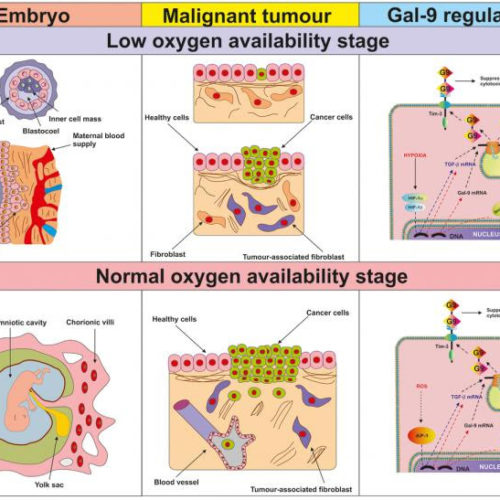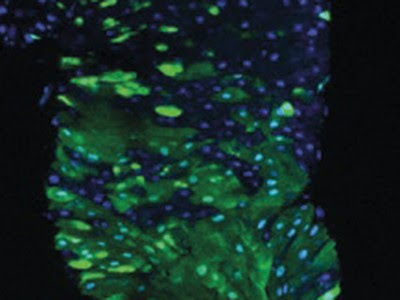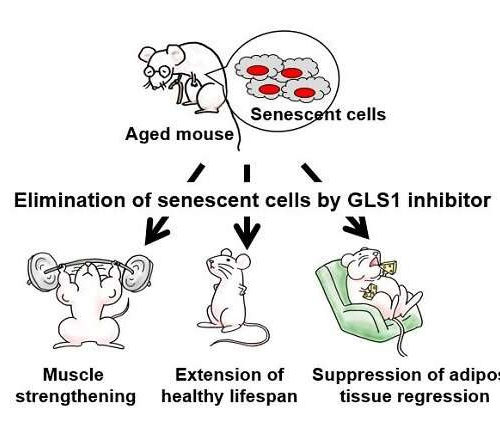IMPACT JOURNALS LLC IMAGE: Proposed mechanism of the regulation of galectin-9 expression in human cancer and embryonic stage at low and normal oxygen availability stages. The figure depicts the key processes taking place in embryonic development and malignant tumour growth during the initial low oxygen availability (hypoxic) stage and later (normal oxygen availability) stages. The...
Category: <span>Anti-aging</span>
Chinese scientists may have key to delaying ageing
Tue, January 19, 2021, 9:49 PM Scientists in Beijing may be one step closer to having the answer to living longer and reversing the effects of ageing. A group of biologists at the Chinese Academy of Sciences say they have developed a world-first new gene therapy and have been running tests on mice. It involved...
Stanford study reveals immune driver of brain aging
STANFORD MEDICINE Suppose Smokey the Bear were to go on a tear and start setting forest fires instead of putting them out. That roughly describes the behavior of certain cells of our immune system that become increasingly irascible as we grow older. Instead of stamping out embers, they stoke the flames of chronic inflammation. Biologists...
NAD+ can restore age-related muscle deterioration
by Ecole Polytechnique Federale de Lausanne Skeletal muscle tissue. Credit: University of Michigan Medical School The older we grow, the weaker our muscles get, riddling old age with frailty and physical disability. But this doesn’t only affect the individual, it also creates a significant burden on public healthcare. And yet, research efforts into the biological processes and biomarkers...
Anti-ageing effects of protein restriction unpacked
Cristal M. Hill & Matt Kaeberlein Two animal studies show that restricting the dietary intake of branched-chain amino acids can extend lifespan by modulating the mTOR signalling pathway. But more research is needed before this diet should be recommended in people. The idea that dietary restriction can be used as a tool to increase lifespan has been a...
An Example of High Dose Fisetin Exhibiting Senolytic Effects in Mice
Fisetin is perhaps the most intriguing of the first generation senolytic compounds, those capable of selectively destroying senescent cells in old tissues and thus producing rejuvenation to a meaningful degree. Senolytics have been demonstrated in animal studies to reverse many age-related conditions to a greater degree than any other approaches. Why is fisetin intriguing? Because in mice, it appears to be about...
Arterial Stiffening with Age Correlates with Structural Damage to the Brain
Today’s open access research paper is a reminder of one of the more direct mechanistic links between vascular aging and brain aging. Blood vessels stiffen with age, becoming progressively worse at the necessary task of contracting and relaxing in response to circumstances. This is in part due to cross-linking in the extracellular matrix, in which advanced glycation end-products (AGEs) such as glucosepane form persistent bonds...
Declining Resilience as a Manifestation of Aging
Resilience, meaning the ability to recover from wounds, infection, and other forms of damage, is more or less the flip side of frailty in aging. Frailty increases, resilience decreases. A damaged system is less robustly resilient to further damage, as reliability theory tells us. Degenerative aging is precisely an accumulation of cell and tissue damage at the molecular level,...
Physical frailty syndrome: A cacophony of multisystem dysfunction
by Columbia University’s Mailman School of Public Health Credit: CC0 Public Domain In the inaugural issue of the journal Nature Aging a research team led by aging expert Linda P. Fried, MD, MPH, dean of Columbia University Mailman School of Public Health, synthesizes converging evidence that the aging-related pathophysiology underpinning the clinical presentation of phenotypic frailty (termed as “physical frailty”...
Inhibiting KGA-dependent glutaminolysis in mice found to eliminate senescent cells
by Bob Yirka , Medical Xpress Credit: University of Tokyo A team of researchers affiliated with a host of institutions across Japan has found that inhibiting kidney-type glutaminase-dependent glutaminolysis in mice can lead to elimination of senescent cells. In their paper published in the journal Science, the group describes using RNA interference to look for enzymes that are...








